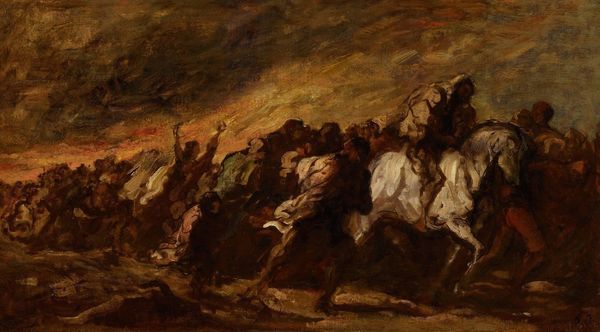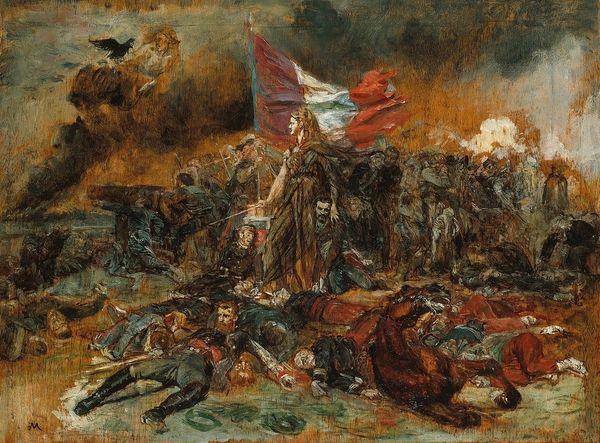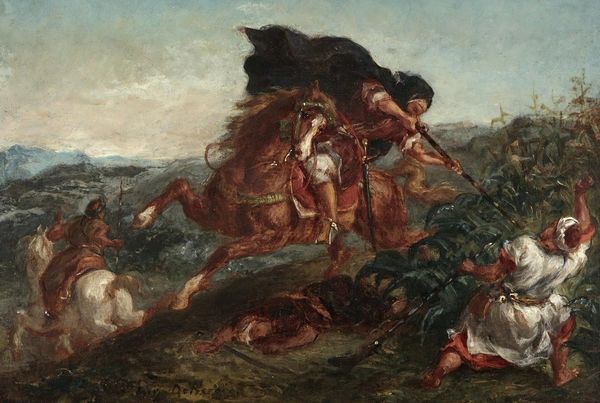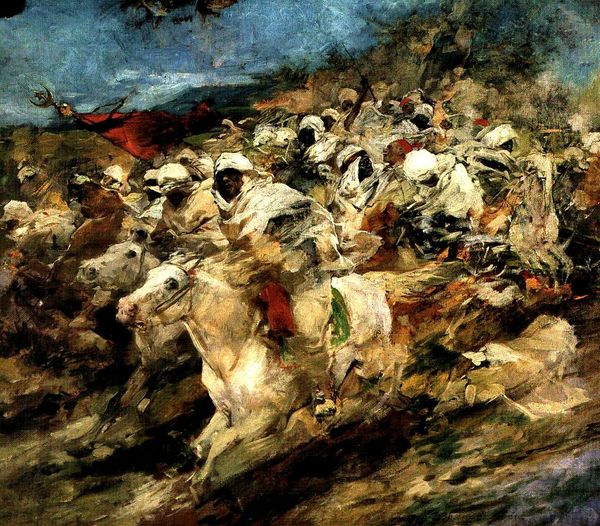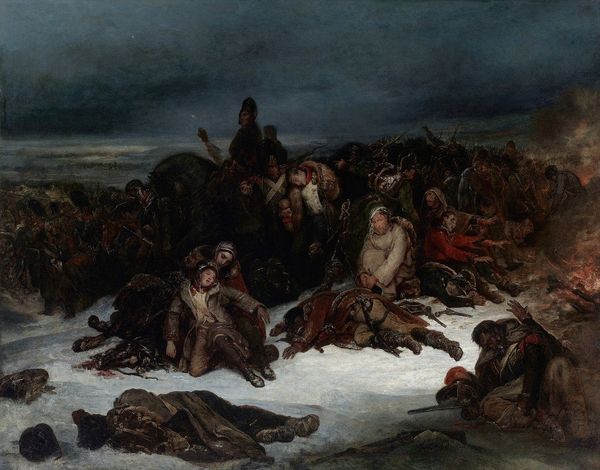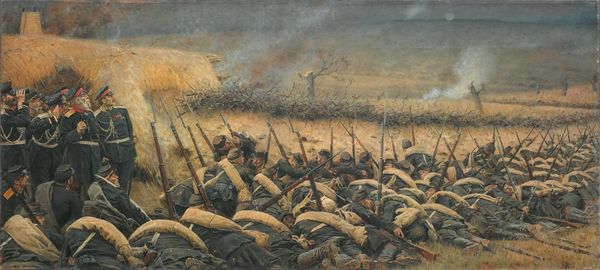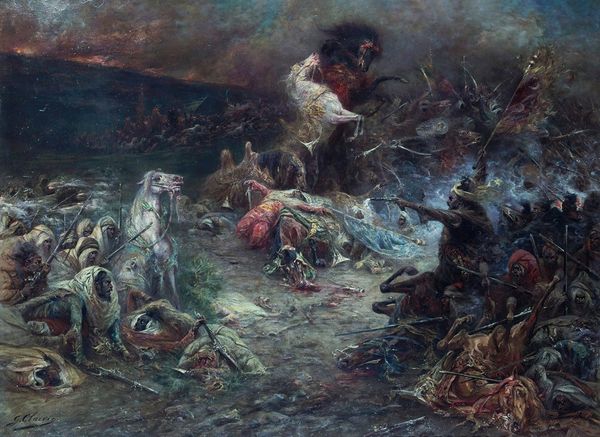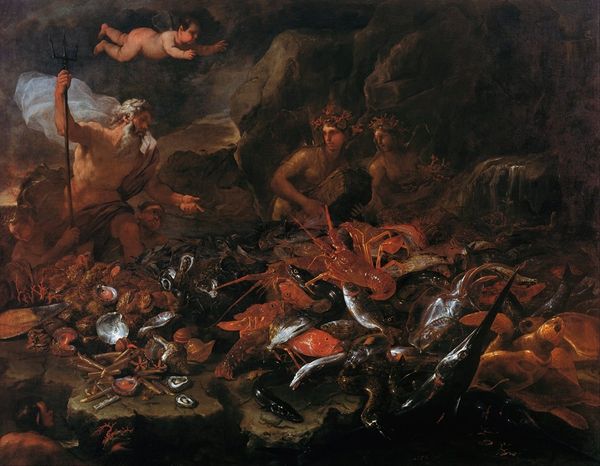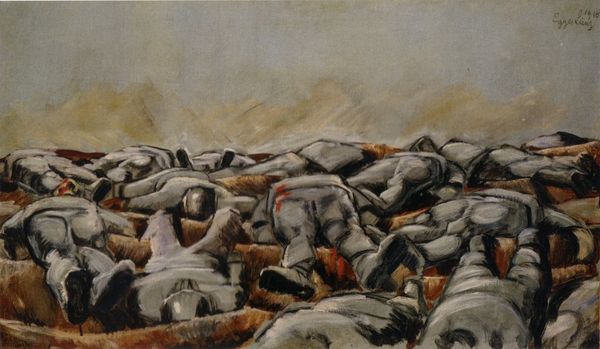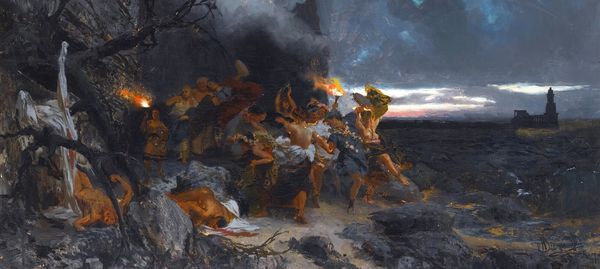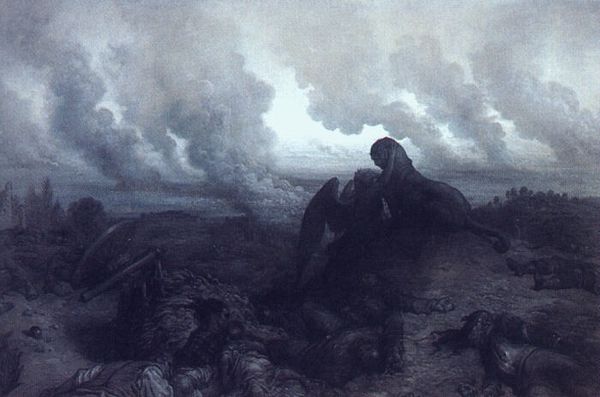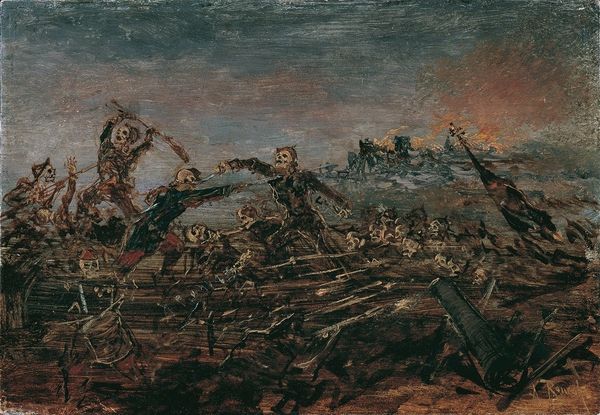
Copyright: Public domain
Curator: Well, that's intense. It feels like chaos condensed onto canvas. Editor: It certainly does. This is "Smârdan Attack" by Nicolae Grigorescu, created in 1878. It's an oil painting depicting a scene from the Romanian War of Independence. Curator: Ah, a war scene! Now I get the adrenaline. There's a raw, almost brutal energy in those brushstrokes. I feel thrown into the thick of it. Is that snow on the ground or just churned earth? Editor: Indeed, Grigorescu utilizes very loose, expressive brushwork, almost impressionistic, to convey the dynamism of battle. It's generally accepted that the ground is covered with snow, which adds to the harshness of the scene. He actually witnessed the events, solidifying its place within the tradition of history painting in Romanian art. Curator: Witnessed it himself, huh? No wonder it feels so immediate. You can practically hear the roar. But even with all that motion, there's something… incomplete about it, like a sketch that got out of hand, in a brilliant way. Editor: It is a remarkable rendering. Considering the historical context is also quite revealing. Following the establishment of the Romanian state in 1866, images of bravery and national heroism, like we see here, became crucial in defining its identity and solidifying its place on the European stage. Grigorescu here uses realism blended with romanticism, an exciting, even contradictory positionality. Curator: So, it's not just about the war, but about building a national image? The heroism implied, but not fully defined in brushstroke? The image almost asks you to complete it in your mind, so you buy into it, or identify yourself. Pretty clever, and maybe a little manipulative, I suppose, given the context you painted in. Editor: Precisely! The painting operates on several levels. It offers a snapshot of war's brutality while also serving as a carefully constructed narrative designed to inspire national pride. Curator: Makes you think about how art can be weaponized, or is there really just no way out for the artist to stay objective, right? Still, undeniably powerful stuff. Leaves you with a lot to think about beyond just the battle itself. Editor: Absolutely, and that intersection of aesthetics and national narrative continues to resonate today as we consider how visual culture shapes our understanding of history and ourselves.
Comments
No comments
Be the first to comment and join the conversation on the ultimate creative platform.
